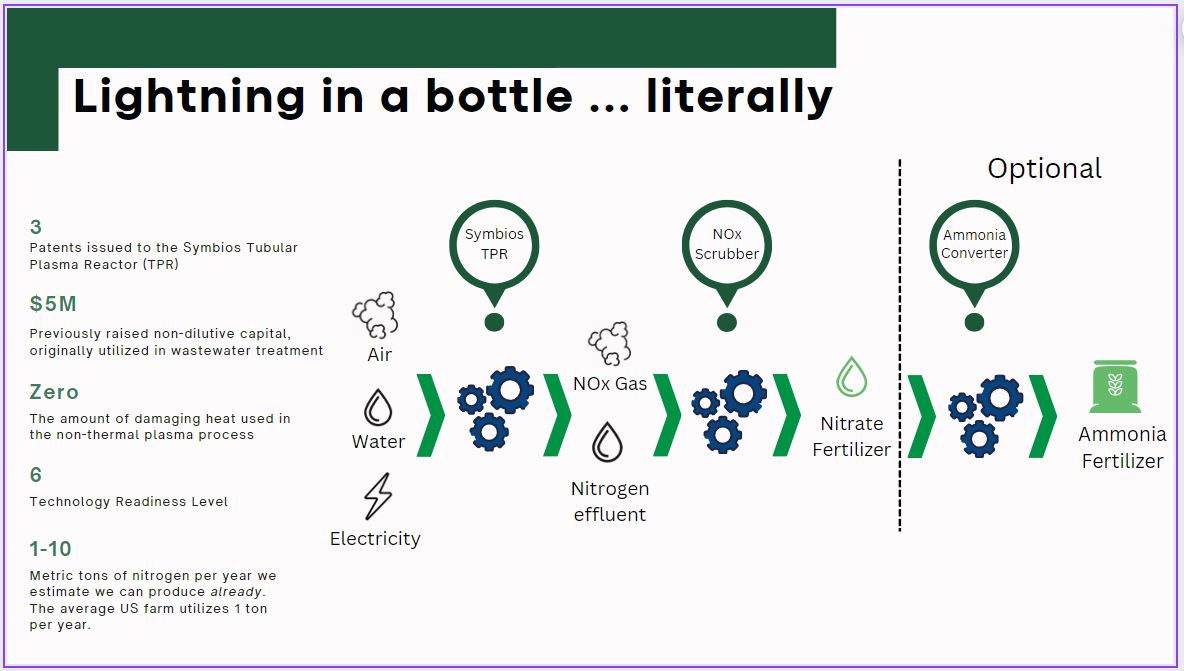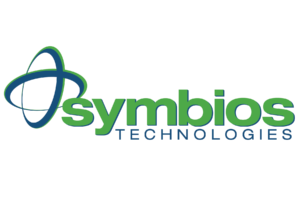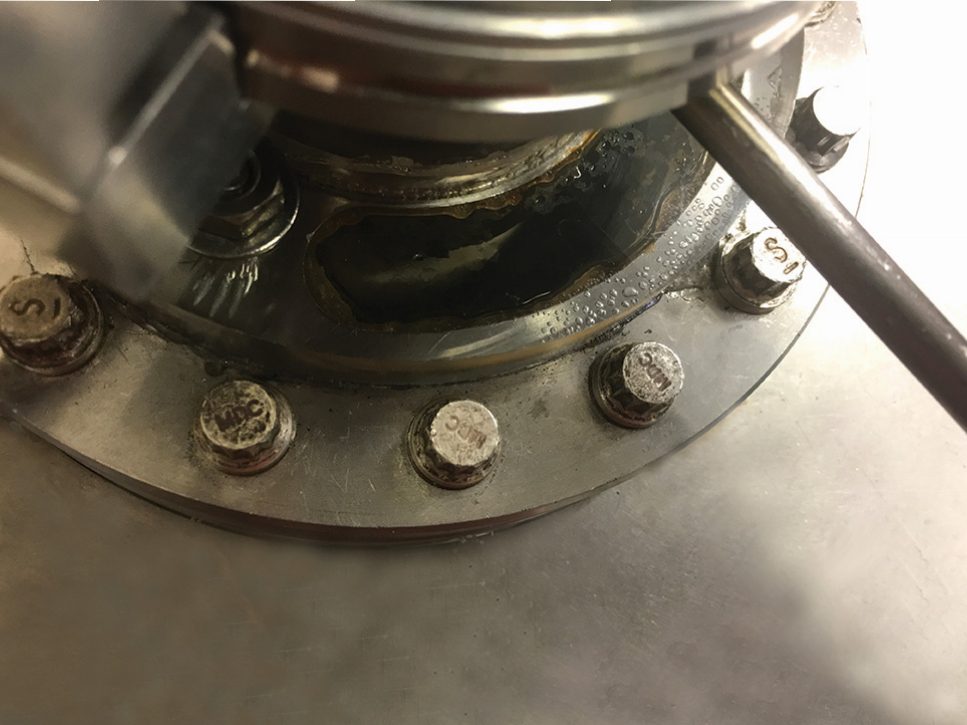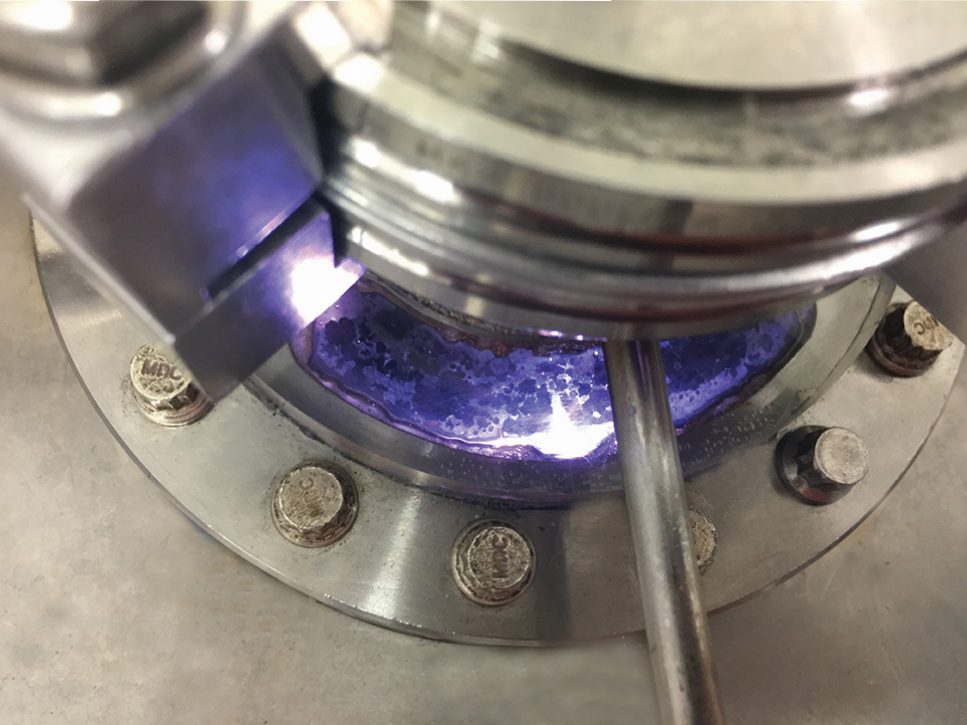
Our customers need improved, lower-cost nitrogen fertilizer that is decoupled from the price of gas and decentralized from the supply chain. The Symbios Tubular Plasma Reactor (TPR4000™) is the solution that can produce inexpensive nitrogen fertilizer for a farmer right in their backyard.
The concept is simple. Nitrogen makes up roughly 78% of the ambient air. Our machine draws in air and converts the available nitrogen into a usable nitrogen fertilizer product through a plasma reactor system. The only ingredients: air, water, and electricity.
Technology Overview:

Illustration of TPR4000 design and operation
The patented Symbios TPR4000™ Plasma Oxidation System is a low-power, plasma-based, advanced oxidation technology. The unique design of the TPR combines a continuous mixing mechanism with an air-enhanced plasma discharge system. Air and water enters from the top into the treatment chamber and is turbulently mixed with the plasma nozzles. A low voltage is applied across the device to react with the air and water. The resulting plasma oxidation products are usable forms of nitrogen that can be converted through standardized steps into liquid nitrate fertilizer or ammonia (the two most common fertilizers).
Not only has this new design proved effective in producing the ingredients for fertilizer, but it is scalable (in length of the tube and diameter) in continuous water flow mode and can be expanded with parallel reactors to create larger volumes of fertilizer.
Product Features:
- Nonthermal plasma oxidation system
- Requires only air and electricity to directly and continuously create nitrogen.
- Modular and scalable to your application
- Low-power and compressed air requirements for seamless integration into your facility
- Automated and microprocessor-controlled with a user-friendly control interface
- Complete rack enclosure with included safety features
Benefits for the farmers
- Lower priced nitrogen fertilizer
- Decoupled from the cost of fuel
- Autonomy from the supply chain
- Improved soil health


